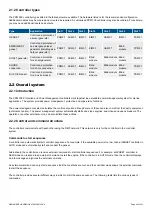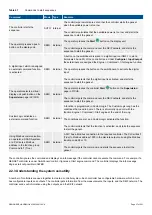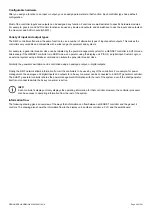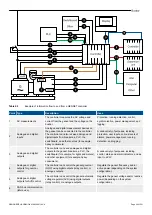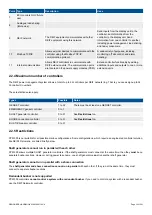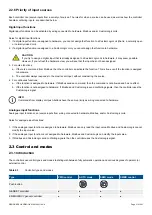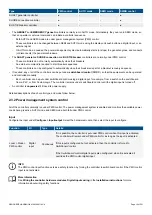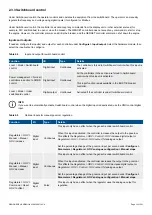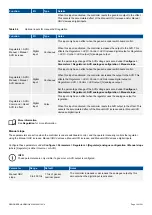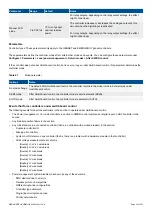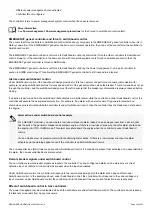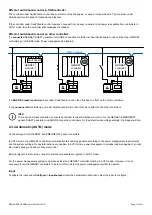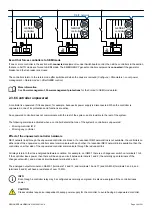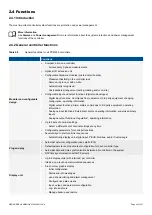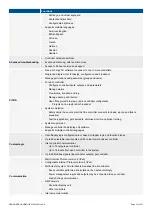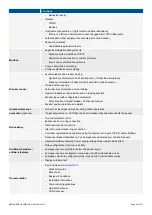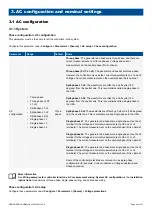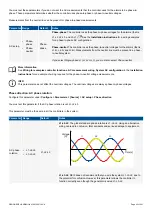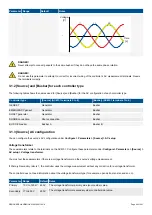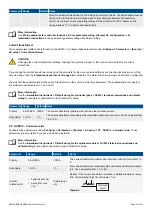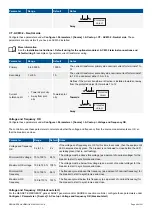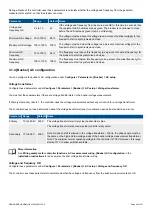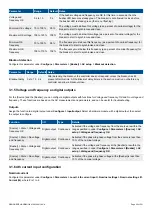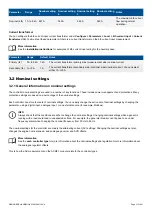
◦
Different power management rules activated
◦
Controller ID not configured
The controllers return to power management system control when the cause is removed.
More information
See
Power management
,
Power management protections
for the
Forced to switchboard control
alarm.
EMERGENCY genset controller and force to switchboard control
The events that force controllers to switchboard control (listed above) only apply to the EMERGENCY genset controller when it is in
Harbour operation
. If the EMERGENCY genset controller is not in
Harbour operation
, then none of the events force the controller to
Switchboard control
.
The EMERGENCY genset controller is not forced to
Switchboard control
by alarms that force the other controllers to
Switchboard
control
. However, if the controller(s) in the same section with connected equipment are forced to switchboard control, then the
EMERGENCY genset controller is forced to SEMI mode.
The EMERGENCY genset controller is not forced to
Switchboard control
by the
Power management > Force all controllers in
section to SWBD control
input. This allows the EMERGENCY genset controller to still respond to a blackout.
Alarms under switchboard control
Under
Switchboard control
, if the switchboard design provides for this, the operator can perform a manual synchronisation (for
example, by using switchboard buttons for relay speed control of the genset) and then close the breaker. This command does not go
through the controller, and the switchboard design must therefore ensure that the breaker synchronisation is always checked before
closing.
If an action is performed from the switchboard that activates a controller alarm while the controller is under
Switchboard control
, the
controller will execute the associated alarm action. For example, if an alarm with an alarm action
Trip generator breaker and
shutdown engine
is activated while the controller is under
Switchboard control
, then the controller trips the breaker and shuts down
the engine.
Alarm actions under switchboard control example
For a GENSET controller, you can create a low lube oil pressure alarm (based on an analogue input from a sensor) that
has the action
Trip generator breaker and shutdown engine
. If there is a low lube oil pressure, then this alarm shuts down
the engine in AUTO or SEMI mode. This alarm also shuts down the engine when the controller is under
Switchboard
control
.
You can create a low oil pressure alarm with the
Warning
alarm action. If there is a low oil pressure, then this alarm
activates and the warning appears even if the controller is under
Switchboard control
.
The non-essential load (NEL) trips are active under
Switchboard control
. If a condition is present that activates a non-essential load
trip alarm, the non-essential loads are disconnected.
Remote breaker signals under switchboard control
You can configure remote breaker signals as inputs to the controller. You can configure an alarm on an external over-current
detection input, so that the controller trips the breaker when the input is activated.
Under
Switchboard control
, the controller will respond to the remote breaker signal IF the alarm action has an effect under
Switchboard control
. In the examples above, under
Switchboard control
, the controller will not respond to the under-voltage coil
input. However, under
Switchboard control
the controller will trip the breaker if the over-current detection input is activated.
Effect of switchboard control in ALL controllers
The power management system is disabled when all the controllers are under
Switchboard control
. The controllers do not respond
to blackouts or requests from heavy consumers.
DESIGNER'S HANDBOOK 4189340911K UK
Page 36 of 521





